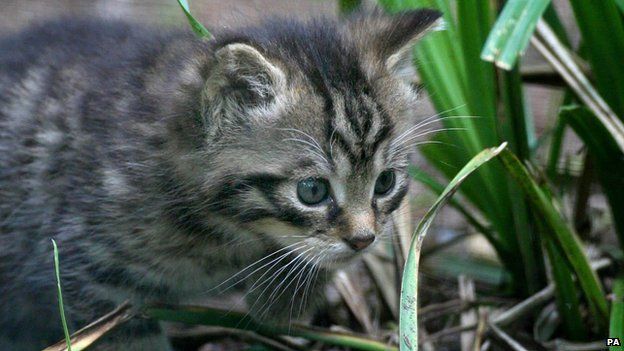Safety claws: How do you make a Scottish wildcat haven?
- Published

The Scottish wildcat is on the brink of extinction, say conservationists.
The Scottish Wildcat Association (SWA) has warned that numbers of pure-bred cats have fallen to as low as 35 individuals.
Scottish Natural Heritage has estimated that there could be 150 breeding pairs left.
In an effort to better conserve the species, the SWA, scientist Dr Paul O'Donoghue and Kent-based charity the Aspinall Foundation say they have created a haven.
They say the following attributes and actions can better protect the animals.
Remote location
The project involves about 300 sq miles of land on the Ardnamurchan Peninsula in the north west Highlands.
Ardnamurchan includes some of Scotland's wildest landscapes and few human residents.
The main communities of Acharacle and Strontian have low populations of about 560 and 350.
Domestic cats pose some of the greatest risks to the future of wildcats.
The pets and feral cats breed with wildcats, reducing the pool of pure wildcats, and also pass on life-threatening diseases.
The haven project involves trapping feral cats and hybrid wildcats and then having them neutered. Pets are also being neutered and inoculated.
Those behind the project say a key feature of the haven is a feral cat buffer zone, or border control area.
The narrow "neck" of the peninsula provides a place where the team can monitor the movement of feral cats on to the peninsula from neighbouring areas.
Live traps and also camera traps are being set up to catch and observe the feral cats.
The project is working with landowners in an effort to provide more habitat favoured by the rare cats, such as woodland planted with native trees.
Neighbouring Sunart and Morven are seen as offering potential habitat for wildcats.
- Published15 July 2014
- Published26 September 2012
- Published11 September 2012
- Published31 August 2012
- Published29 August 2012